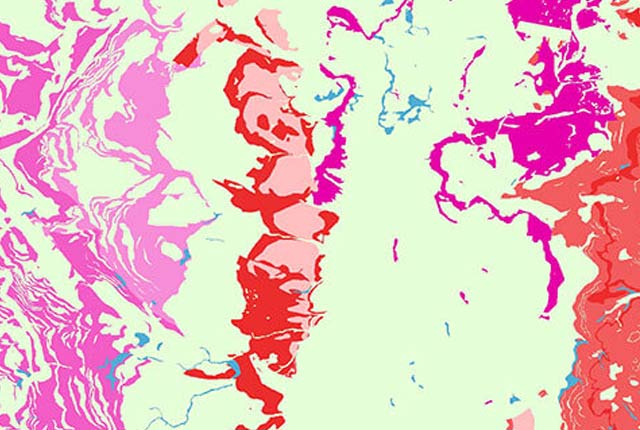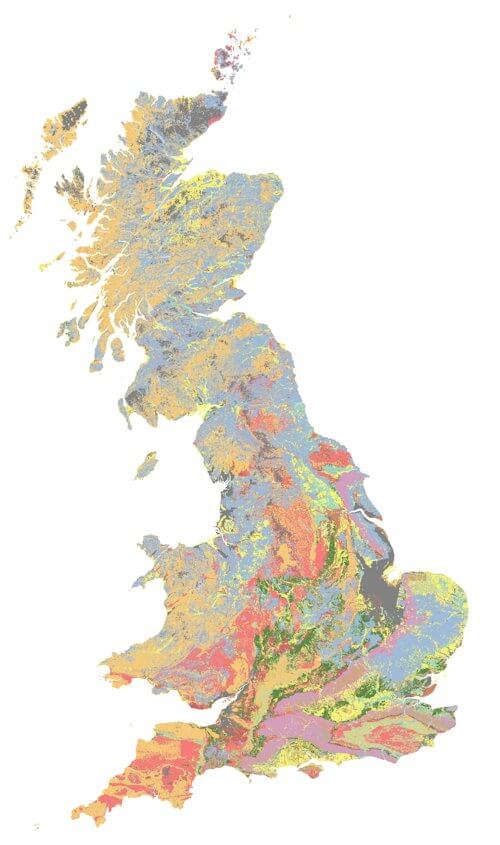Key information
Scale:
1:50 000Coverage:
Great BritainAvailability:
LicensedFormat:
GIS line and polygon data. (ESRI, MapInfo, others available by request.)Price:
BGS Civils bundle (all eight layers) £0.56 per km2
BGS Civils individual layers £0.34 per km2
Subject to number of users, licence fee and data preparation fee.
Uses:
Local-level useGet data
Free access
Our free data is available under the Open Government Licence. Please acknowledge reproduced BGS materials.
BGS Civils: engineered fill sample dataPaid access
Supporting documents
BGS Civils is a suite of national maps of engineering properties based on geological data and the digital 1:50 000-scale geological map — BGS Geology 50K.
It comprises eight layers:
- bulking volume
- corrosivity (ferrous)
- discontinuities
- engineered fill
- excavatability
- foundation conditions
- strength
- sulfate/sulfide
The primary goal of the product is to provide the key engineering characteristics of the geology of Great Britain to professional users who need simple and rapid access to such information. You might be planning pipeline routes avoiding difficult ground conditions, calculating tender costs for trench excavation or you might need knowledge of ground properties in order to plan your daily activities.
The data is provided as GIS shapefiles that are available to licence individually or as a bundle to meet your own requirements.
This dataset
This theme provides information on the suitability of a geological material to be used as engineered fill.
The spatial model covers England, Scotland and Wales at 1:50 000 scale using data from the following BGS datasets:
The use of engineering fill is an important consideration in the civil engineering and extractive industries. The rapidly increasing cost of removing material off-site, and especially disposal of unused material, means that a great deal of effort is now taken to identify if and how these materials can be used on-site.

Excavated material can often be used for other purposes. Source: Didgeman/Pixabay.
What is engineered fill?
‘Fill’ is a material that is used to fill in a depression or hole in the ground, create mounds or otherwise artificially change the elevation of the ground. These may include:
- earthworks that infill, raise or level the ground
- embankments
- foundation pads
- landscaping
- road bases
Fill may be engineered or non-engineered.
Engineered fill is selected, placed and compacted to an appropriate specification in order that it will exhibit the required engineering behaviour.
Non-engineered fill usually involves the disposal of waste materials. Normally such fill would occur on sites where uncontrolled filling has taken place and therefore no reliance can be placed on the type of fill material and method of placement.
Classification
The classification for the engineered fill theme primarily follows the Highways Agency classification but is also informed by expert judgement and methods previously used by the BGS. The description of the classification can be found in the free downloadable user guide.
Download BGS Civils engineered fill sample data
You may also be interested in

BGS Civils: bulking volume
BGS Civils is a suite of national maps of engineering properties based on geological data and the digital 1:50 000 scale geological map – BGS Geology 50k.

BGS Civils: discontinuities
This theme provides information on the discontinuities in bedrock and superficial deposits as part of a suite of GIS layers for different engineering parameters.

BGS Civils: excavatability
This theme provides information on the excavatability of geological deposits at surface.

BGS Civils: foundation conditions
This theme provides information on the suitability of a geological material for foundations as part of a suite of GIS layers for different engineering parameters.

BGS Civils: corrosivity ferrous
The BGS corrosivity dataset is a GIS layer supporting the management of underground iron assets that has been created in response to the growing awareness of the cost of maintenance of structures such as pipelines and building foundations.

BGS Civils: strength
This theme provides information on zones of rock strength and the local factors controlling it, as part of a suite of GIS layers for different engineering parameters.

BGS Civils: sulfate/sulfide potential
The BGS Civils: sulfates and sulfides dataset is a GIS layer that supports the management of underground assets






